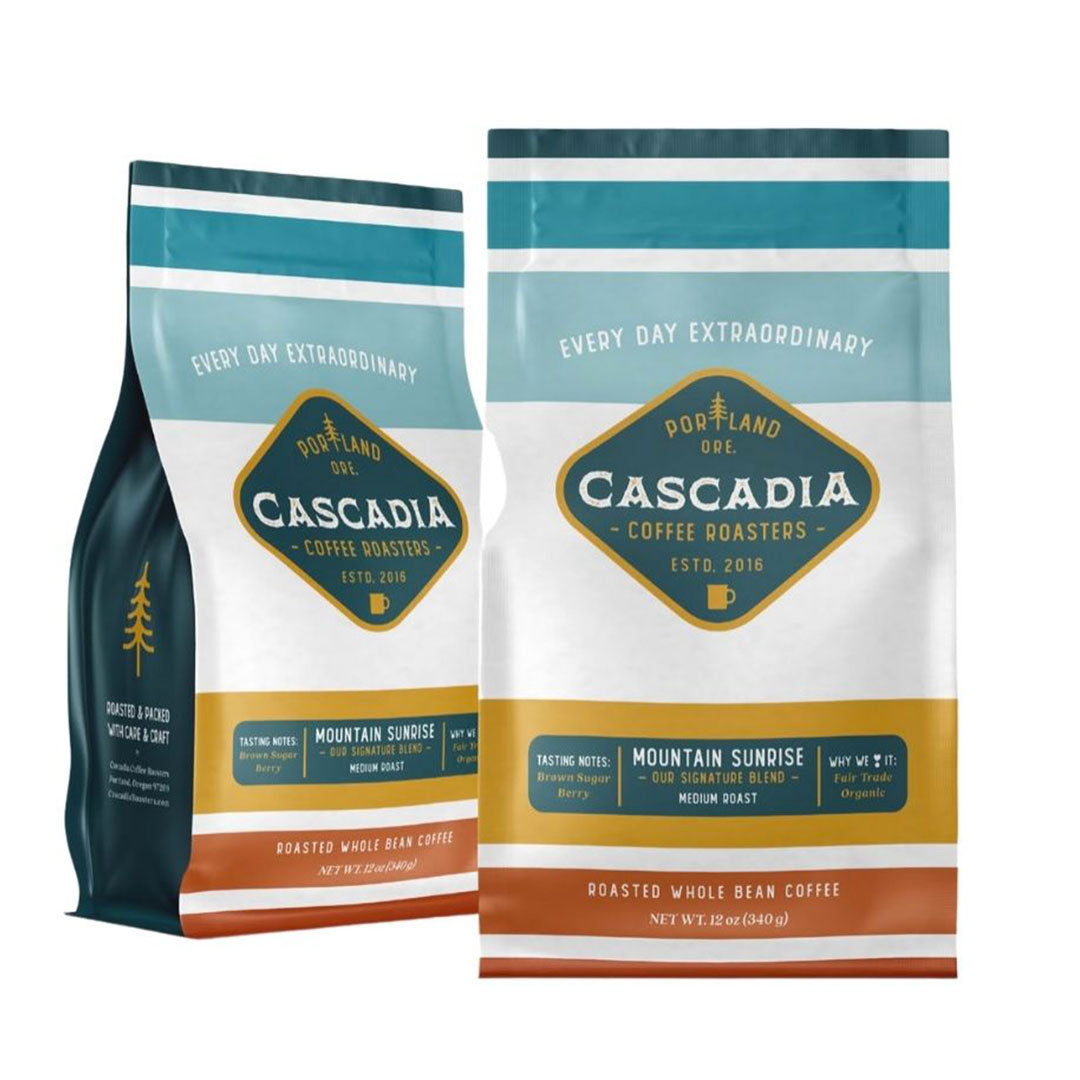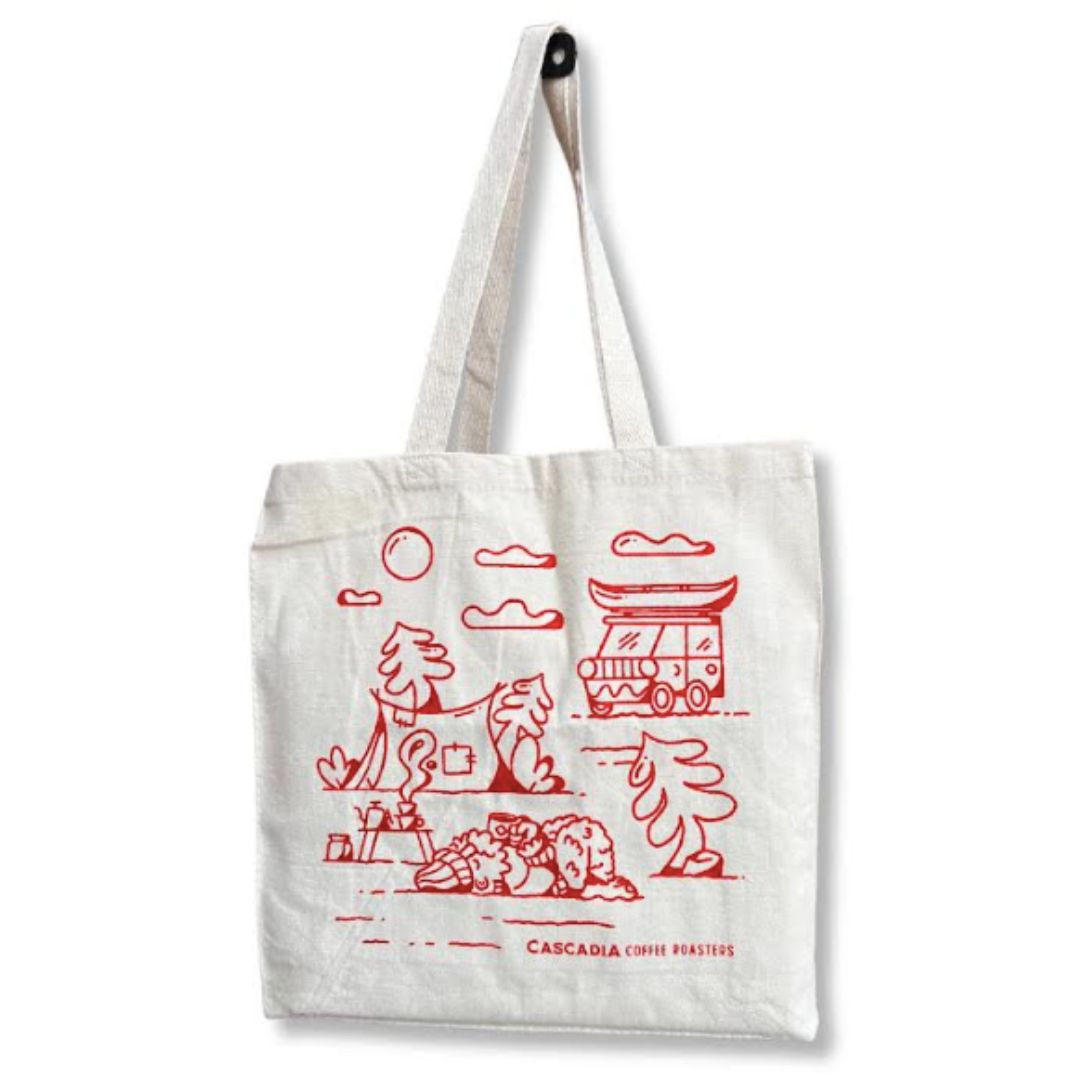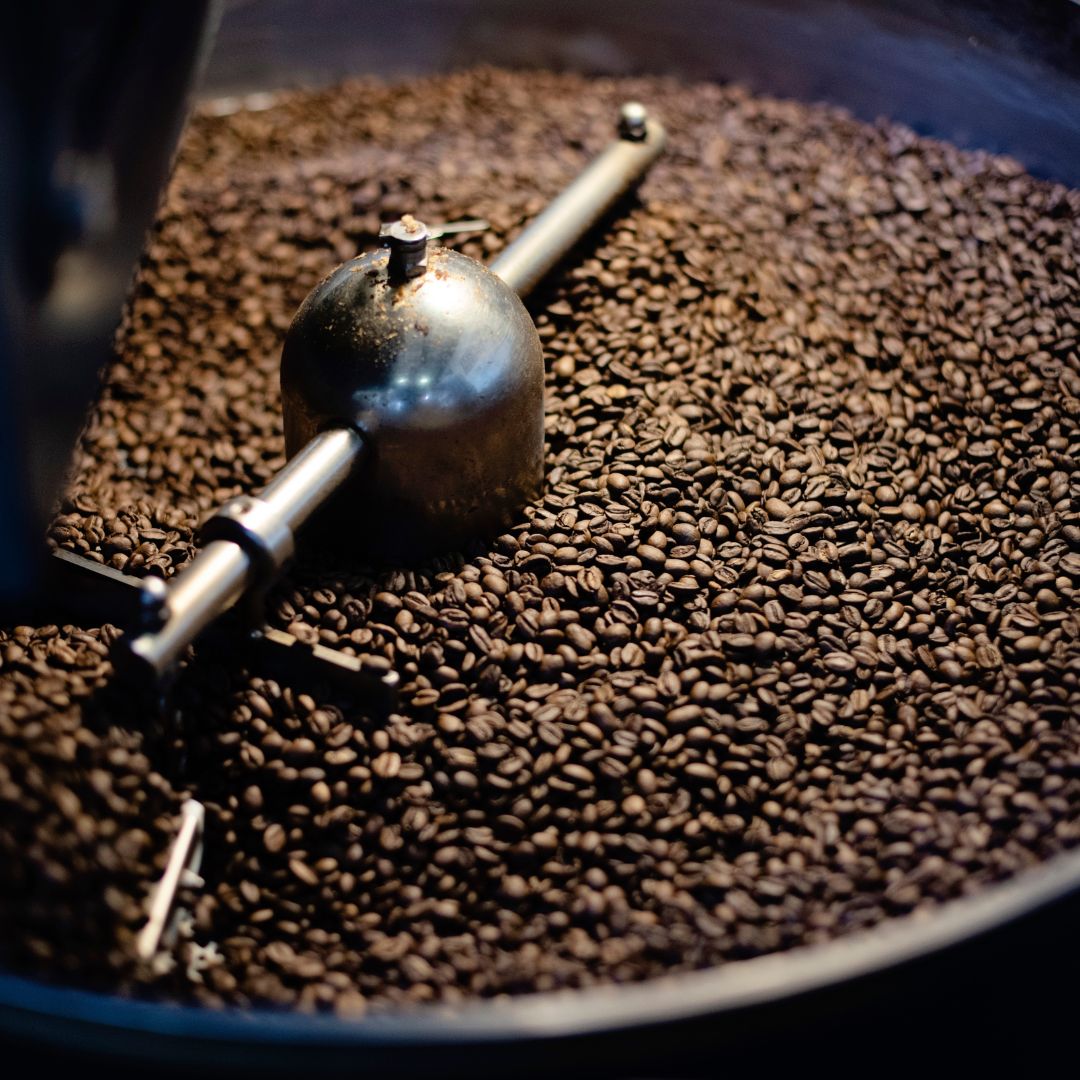
Spring is finally here, and it feels like we can stop holding our breath at last. Exhale winter’s cold, wet funk and inhale the fresh, balmy, flower-scented breezes. Although jewel-toned crocus and cheerful yellow daffodils tend to arrive first on the scene, it’s the explosion of pink cherry blossom confetti which truly kicks off the season.
In Japanese folktales, the cherry blossom—or sakura—represents life’s fleeting journey. Experts at the Brooklyn Botanic Garden explain that their showcase season usually lasts less than a month, with individual trees only flowering for a week or two. Even the trees themselves are relatively short-lived (as trees go) with most living only 30 to 40 years. If you miss the season locally, never fear! You can visit their virtual Japanese garden or Cherry Esplanade walks while enjoying cherry blossom panna cotta with your warm, rich Cascadia Roasters coffee.

Or grab tickets now for the LaVelle Vineyards Cherry Blossom Festival. There will be flowers, wine, vendors, and Shinotae Japanese Cherry Trees over two weekends in late April and early May. On a more educational note, check out the annual Cherry Blossom Day at the Oregon State Capitol in Salem. Sponsored by the Capitol History Gateway, it celebrates the cherry blossoms, cherry industry, and Japanese culture influence so prevalent in the Pacific Northwest. It’s free and open to the public.
Many communities host celebratory cherry blossom events kicking off the spring season so check with the local Chamber of Commerce or city hosted social media. It’s always nice to incorporate a bit of local fun into a hike or exploration. You never know what lovely little diner, mom and pop antique store, or charming park setting will surprise you along the way.

These festive flowers aren’t around for very long so as soon as the first buds appear, it’s time to schedule a mid-week afternoon hike or weekend road trip. Because cherry trees tend to pop all at once when the weather warms up, here are a few amazing places to see spring flowers galore and jumpstart the season in style.
Portland Metro

In Portland, pink petal season typically runs from late March through early April. One great place to start is the Japanese American Historical Plaza. Running from the Burnside Bride along Naito Parkway, it contains sculptures and twelve poetry-engraved granite stones. To fully capture the powerful spirit and solemn history of the Plaza, download the Public Art PDX appwhere you’ll find a guided walking tour narrated by celeb icon George Takei.
The Portland Japanese Gardenhosts their annual cherry blossom watch calendar online with regular updates and plenty of photographs. You can watch the Yoshino and Weeping Cherry trees go from bare to barely pink to full flower through the website or in person.

But springtime isn’t ONLY about cherry blossoms. There are wildflowers peeking up around every corner and endless opportunities to hike amidst their glory. Not far from Portland proper is West Linn’s Camassia Nature Preserve. With more than 22 acres of hiking and wildflowers, this gem of a spot is maintained by the Nature Conservancy. There is a one-way Loop Trail where you’ll see more than 300 species of plants alone!
Powell Butte Nature Parkhas a dozen different kinds of wildflowers each spring and is open to hikers, bikers, and even horseback riders. 600+ acres on top an extinct volcano, it’s not to be missed. Or try on (see what I did there?) Tryon Creek State Natural Area’s Trillium Trail which is paved in places making it easy for all ages and abilities.
Outside of Town

Daytrip-ready with 30+ flower varieties, Mosier Plateau’s 3.5-mile round-trip hike covers a 45-acre spread. Their trails even top out with Insta-ready Gorge views incorporating the twisting Columbia River down below.
Or hit Tom McCall Preserve for 300+ plant species across meadows, hills, river views, and the shadows of Mount Adams and Mount Hood. Another 3.5 mile round-trip, no fees or permits are required to visit which is a nice bonus.

Portland Monthly admits that when it comes toHood River Mountain, “Yodeling rarely feels so appropriate as atop this 2,000-plus-foot rise south of Hood River where alpine panoramas unfold as if spliced from The Sound of Music.” More than just nature, here the wilderness includes a valley of farms, orchards, barns, and livestock as well. Rodgers and Hammerstein soundtrack optional but always recommended.
Dog Mountain is a harder, nearly 7-mile trail on the Washington side of the Gorge. But once you reach the top, you’ll find flowers surrounded by Mount Hood and Mount St Helens. This hike can be steep in places so might not be great for small children.

Want a true old-west feel? Then look no further than Dalles Mountain Ranch. Like Dog Mountain, this is a Washington side 7-mile loop but comes with a slice of yesteryear. You’ll pass old barns, wooden wagons, a homesteader graveyard, and historical signage telling the story of the Brune and Crawford families.

Head towards the coast a little and you’ll find Soapstone Lake Loop, a 3-mile hike just over an hour from Portland. Like Dalles Mountain, this was once a much-beloved family homestead. But now little remains beyond a grove of flowering cherry trees and few small ruins. Towards the end of the loop keep an eye out for red-frilled carnivorous Sundew plants as this is the only place in our area where they grow and hunt for insects.

Pacific Northwest
Traveling during this auspicious season? That’s ok! There are plenty of other great spots for flowers and blossoms galore. In Seattle, the University of Washington offers several urban spots to enjoy cherry blossoms. The Quad has 29 trees around its plaza and while there you’ll find walkable paths, shaded benches, and the amazing gothic architecture of the school’s main halls.

Green Lake Park, Washington Park Arboretum, and Mount Baker, Seward, and Jeffersonparks all offer cherry trees, usually framed by evergreens, mountain views, and/or waterfront vistas. Visit the Seattle Department of Transportation’s interactive tree map and look for the blue dots representing flowering cherry and plum trees. (Then ponder sadly why EVERY city doesn’t have such a magnificent tool.)

In Eastern Oregon’s warm, growth-friendly climate, you can find the Zumwalt Prairie Preserve, another Nature Conservancy site, with 100+ flower types popping up each spring. Another remote site, Kings Mountain Trail, is home to the phantom orchid but requires a more difficult 5-mile hike when searching.

Mt Rainier’s wildflowers don’t kick off until summer’s well underway thanks to the elevation but are something truly special. Rangers and park officials host a wildflower update and suggest late July to early August as the best times to visit. Before coming, look at their top 10 wildflower trails and plan a visit that incorporates a few—or all—on your trip.
Take Note

Wildflower and cherry blossom seasons are a popular time to explore but their ephemeral nature means extra care is needed. Travel Oregon has a few tips for Oregonians (and visitors) out hiking through this seasonal rainbow.
- No picking the flowers. It’s illegal to sneak a bouquet off public lands and ruins the magic carpet effect for everyone. It’s also illegal in Washington and can end up costing a $2,000 fine.
- Stay on marked trails. No photo is worth flattening delicate growth.
- Leave the pups at home unless you check with the site first. And yes, ask about drones too. Many sites no longer allow them so clarify before you fly.
- Clean your shoes before and after hiking so you don’t accidentally transport in any invasive species.
And, as always, pack smart. Bring plenty of water (and coffee), sunscreen and sunglasses, first aid supplies, and other necessities on even short hikes and pack out any and all garbage or use designated trashcans.

If you have room at home, consider dedicating part of your garden as a wildflower meadow. We’d all love flowering pink cherry trees as well but don’t always have sufficient yard space. Instead, sow blends of seeds appropriate to your zone in the fall, ideally, so they can work their magic all winter long. Some nurseries even offer wildflower seed bundles which include pollinator or butterfly gardens as well.
Don’t just toss the seeds on existing grasses or scrub, experts say. “Wildflowers need good seed-to-soil contact, adequate access to nutrients, sunlight, water, as well as ample room for roots to grow. Unfortunately, when wildflower seeds are crowded the flowers will not grow, but the existing grass or weed seeds will still thrive.” Thankfully, most don’t require complicated fertilizers or soil treatment.

Then hit the trails, both urban and rural, to experience what makes springtime so delightful. Gone are the darker colors and heavier skies of winter amidst fresh pastels made bright by the sun’s return. Don’t forget that shady spots and breezes are still chilly so opt for a base-layer just in case. Then pack some poetry, a little cold brew or Cascadia Instant coffee, and head out to explore.





